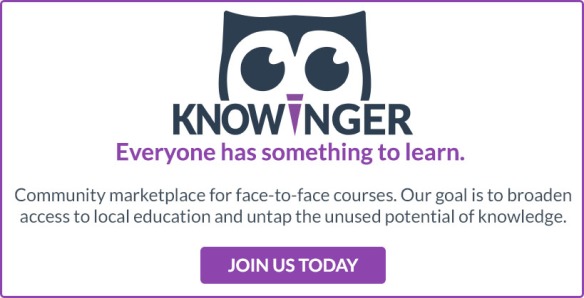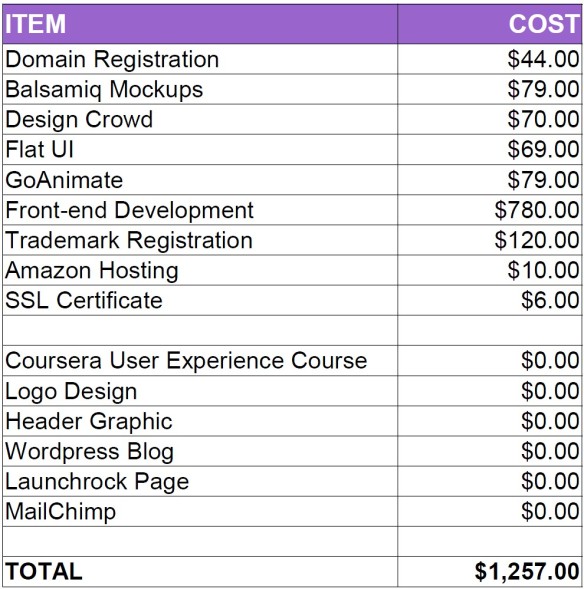 Starting your own teaching business is a highly rewarding experience. At the same time, it requires a great amount of hard work, patience, focus and responsibility. Last week we talked about how to get the right skills to become tutor or a private teacher. Today, we will cover how you can get recognition for those skills and how to best manage your online reputation.
Starting your own teaching business is a highly rewarding experience. At the same time, it requires a great amount of hard work, patience, focus and responsibility. Last week we talked about how to get the right skills to become tutor or a private teacher. Today, we will cover how you can get recognition for those skills and how to best manage your online reputation.
Get Visible
If you cannot be found, you don’t exist. You need to get visible so that your potential students can find your business. To start with, you have to think about your brand. Are you going to use your own name or are you planning to use a business name? It all goes back to what image you want to project and what your personal and business goals are.

Image by sweethaa via Flickr
Personal Name vs. Business Name
Using your personal name is obviously the easiest option. In Australia, you won’t need to register a business name if you use your individual name. Don’t forget you will still need ABN (Australian Business Number) for tax purposes!
From a branding perspective, your personal name suggest you are a freelancer running your business by yourself. This can be an advantage as some people might prefer individual tutors with a personal touch over more anonymous private schools. On the other hand, this may become a problem when you decide to scale your business and hire other teachers and can become a real hurdle if you decide to sell your business one day. In some cases, using your personal name can be seen as less professional and less credible.
Using a business name for your brand can allow you to communicate your Unique Selling Proposition in the name and combine it with a logo that represents your values as a business. Choosing the right company name is extremely important for your business and can have a critical impact on your future success.
Read more: 8 Mistakes To Avoid When Naming Your Business
When you decide on your name, you need to register it with ASIC, or a respective organisation in your country. Your name has to be unique in your state or country and cannot be already registered by someone else.
Now that you decided on your name, it might be a good idea to buy a domain name to represent your company online. Even if you do not plan to go online straight away, you don’t want to risk someone else buying your desired domain name. It’s a negligible cost that can save you a lot of trouble in the future.
Read more: 12 Rules for Choosing the Right Domain Name
Build Trust

Image by mikebaird via Flickr
So now you have a business name and you’re officially in the business. That’s a good start, but to be honest, it really is just a start. You will need to work hard on convincing your first customers that you are the professional, knowledgeable and reliable tutor or trainer you claim to be.
How do you do that? Try to get testimonials from your past and existing students. If you are completely new to teaching or tutoring and are starting from scratch, it might help yo ask your trainer, teacher or employer for a reference to highlight your qualities as an educator. These referrals not only build trust for your business, but also establish respect among your peers.
People Google literally everything nowadays. Even if you do not have the resources to build a website or do not want to make such a big commitment yet, you can set up a free WordPress site where you present your bio, showcase student testimonials and list any qualifications or awards you might have gained.
If you are from Australia or New Zealand, you can set up your teacher profile on Knowinger, our new education marketplace, and start offering your classes and building your reputation via our platform. It is completely free to create a course and acquire new students!
If the online world is not your thing, you can build your reputation through publishing articles in the local press or speaking (or at least participating) at conferences and events attended by your target market. Performing is another great way of acquiring new students and building your brand, if you happen to be a musician or a dancer. If you make art, you can use your products to showcase your skills and start building your reputation through your existing customers.
There are many different ways you can build trust for your teaching business, depending on your discipline. In general, one of the most powerful drivers of growth for small businesses is word-of-mouth. It can take some time to build your client base, but if you provide them with an excellent customer service and great product, they will not only come back but will tell their friends about you.
We will be covering some smart and affordable marketing tactics in one of our future parts of the series, so stay tuned 🙂
Become a Thought Leader
Another step in gaining recognition is to become a thought leader or an authority in your field. As you can imagine, this is not a quick win. It is a rather lengthy process you need to invest a lot of time and effort into. If you do it well though, it can lead to a great revenue growth.

Image by kalidoskopika via Flickr
Probably the best way to begin your journey is to start a blog. Your blog should be closely related to your teaching business, but the tone of voice and overall appearance will highly depend on your target audience. You would probably choose a different voice targeting moms whose little girls attend your dancing classes, or writing for young professional who might be interested in your copy-writing course.
Read more: 30 Quick Content Marketing Tips Every Marketer Needs to Know

Image by Hamed Saber via Flickr
The next step on your way to become a respected expert in your field would be to publish a book. As difficult and expensive it might seem, there are many online tools you can use to self-publish an ebook.
Guest posting is another great way to gain reputation. Try and pitch your article to a well-known online publisher covering your discipline. You never know, you might get lucky!
Speaking at conferences, hosting podcasts, or creating online videos are another widely used tools that will help you make the cut. Participate in online discussions and forums and offer your expertise to others. Be creative, consistent and provide your audience with a quality content!
It goes without saying that to be a true expert in anything, you need to immerse yourself in professional development. Reading, networking with your colleagues and attending webinars and conferences will help you keep up to date with new developments in your area of expertise.
Manage Your Reputation
Your reputation is everything! As a small business or an entrepreneur, you want to make sure that people talk about you in a positive way. You cannot afford unhappy customers and negative reviews. That can be detrimental to your business, especially at the beginning.

You can’t really control what people say about you, but your can to some extend manage your reputation online. Start with searching your name on Google and include search in Google Images. Have you found anything that can potentially damage your professional image? You can either remove the content by yourself, if it was created by you, or hire an online reputation management agency who can help you bury the unwanted information. You should set up Google Alerts to monitor any mentions of your brand name on the internet.
As more and more students use reviews to make their decision, your online reputation is extremely important for your business. If you happen to get a bad review for your classes, respond to it and offer your side of the story. Do not take criticism personally and try to avoid responding emotionally.
Pay close attention to what people say about your competitors. You can use the information to fill in the gaps people are looking for and to gain a competitive advantage.
Make sure you use your existing social media channels wisely. Keep private things private. It might be a good idea to set up a separate Facebook and Twitter profiles for your teaching business, even if you are just a freelancer using your own name. The rule of thumb is: Do not share anything you don’t want your students to see or read. You never know when or where it can appear. Fine tune your Facebook’s privacy settings to reflect how you want to use your Facebook profile from a professional perspective. Maybe you want to use it as a channel to get your name out there and establish yourself as a trusted authority. In that case, you want all the information you share to be public. Or perhaps you want to keep your Facebook profile for private conversations only and would prefer to hide your posts from anyone but your friends. Either way, make sure to personalize your privacy settings.
Did you like our post? Keep in touch for more updates and great links:
Now you know what skills you need to start teaching and how to gain recognition for your knowledge and qualifications. Next week, we will talk about how to create a business plan for your new entrepreneurial endeavor.






 On the other hand, you probably get a lower quality submissions than if you guarantee you will select and pay one. I asked my friend Zuza, a graphic designer, to help me with some logo ideas. She came up with a concept of the current logo. We then worked together on further developing it to the current look and feel. ($0
On the other hand, you probably get a lower quality submissions than if you guarantee you will select and pay one. I asked my friend Zuza, a graphic designer, to help me with some logo ideas. She came up with a concept of the current logo. We then worked together on further developing it to the current look and feel. ($0

